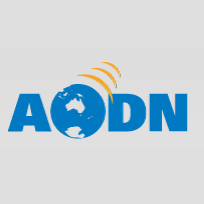Full description
The Marine chapter of the 2016 State of the Environment (SoE) report incorporates multiple expert templates developed from streams of marine data. This metadata record describes the Expert Assessment "The state and trends of ecological communities – algal beds". The full Expert Assessment, including figures and tables (where provided), is attached to this record. Where available, the Data Stream(s) used to generate this Expert Assessment are accessible through the "On-line Resources" section of this record.----------------------------------------
DESCRIPTION OF ECOLOGICAL COMMUNITY FOR EXPERT ASSESSMENT
Algal beds are generally thought of as algae associated with hard substratum such as rocky reefs that provides a strong point of attachment for algae to grow and maintain position. The majority of Australia’s algal beds are found in temperate waters and are in many cases replaced as the major habitat forming benthic organisms by corals in more tropical environments where intense grazing by herbivorous fishes contains algal biomass, particularly in clear offshore waters. The changeover from temperate algal covered reefs to coral dominated reefs is a gradual transition, but, as a broad generalisation, is considered to be in the vicinity of the Abrohlos Islands in Western Australia and Brisbane in Queensland, and is driven by the northern limit of the canopy forming kelp, Ecklonia radiata. Throughout this range, algal beds are found from the intertidal zone down to approximately 30 m depth where light availability limits growth. Despite this, lower limits may be much reduced in turbid or coloured water, or substantially exceed this in clear offshore water. Algal beds are composed of many constituent species with more than 1500 species of red, brown and green algae known from temperate and tropical Australia. Despite this, the overall canopy forming species are dominated by a far smaller subset of species, including Ecklonia radiata (the common kelp) which tends to be the dominant habitat former and most conspicuous species on temperate reefs, particularly on moderate to high energy coasts where it can form an extensive monospecific canopy above other algae. Given this ecological dominance which is consistent at continental scales, the overall health and extent of Ecklonia is considered to be a suitable indicator of the state of algal beds in general. Despite this, Ecklonia is typically replaced as a dominant species by Sargassum and Cystophora species in sheltered waters such as the Tasmanian north coast and upper reaches of South Australian gulfs, and may replace other species that are under stress (such as Macrocystis pyrifera in Tasmania, the giant kelp or Scytothalia dorycarpa in Western Australia). Hence understanding the condition of algal beds can often require a region-specific knowledge of trends in key species in addition to Ecklonia.
DATA STREAM(S) USED IN EXPERT ASSESSMENT
The assessment is predominantly based on data and analyses published in peer review papers. Data has been used from IMOS, The Reef Life Survey, and various state based ecological monitoring programs associated with the establishment of coastal MPAs. Details of specific data sets used to generate the assessment have not been provided.
----------------------------------------
2016 SOE ASSESSMENT SUMMARY [see attached Expert Assessment for full details]
• 2016 •
Assessment grade: Good
Assessment trend: Stable to deteriorating
Confidence grade: Adequate high quality evidence and high level of consensus
Confidence trend: Adequate high quality evidence and high level of consensus
Comparability: Grade and trend are somewhat comparable to the 2011 assessment
• 2011 •
Assessment grade: Very good
Assessment trend: Stable
Confidence grade: Limited evidence or limited consensus
Confidence trend: Adequate high quality evidence and high level of consensus
----------------------------------------
CHANGES SINCE 2011 SOE ASSESSMENT
Uncertain.
Lineage
Statement: QUALITY OF DATA USED IN THE ASSESSMENT Often point surveys with limited time series.Notes
PurposeTo describe the state and trends in algal beds for use in the Marine chapter of the 2016 State of the Environment report.
Created: 17 06 2016
text: westlimit=102.65625000000001; southlimit=-47.4609375; eastlimit=162.421875; northlimit=-7.207031249999999
Subjects
User Contributed Tags
Login to tag this record with meaningful keywords to make it easier to discover
Other Information
EXPERT ASSESSMENT - Algal Beds [direct download] (State_and_trends_algal_beds_final.pdf)
(DATA STREAM USED IN EXPERT ASSESSMENT - Reef Life Survey [online access point])
uri :
http://reeflifesurvey.com/![]()
(State of the Environment (SoE) reporting webpage)
uri :
https://www.environment.gov.au/science/soe![]()
global : 436e580e-ff33-4d15-a39c-b04c7d65083c
Identifiers
- global : 1011e4ce-45a7-496d-91df-525f47e2898c


